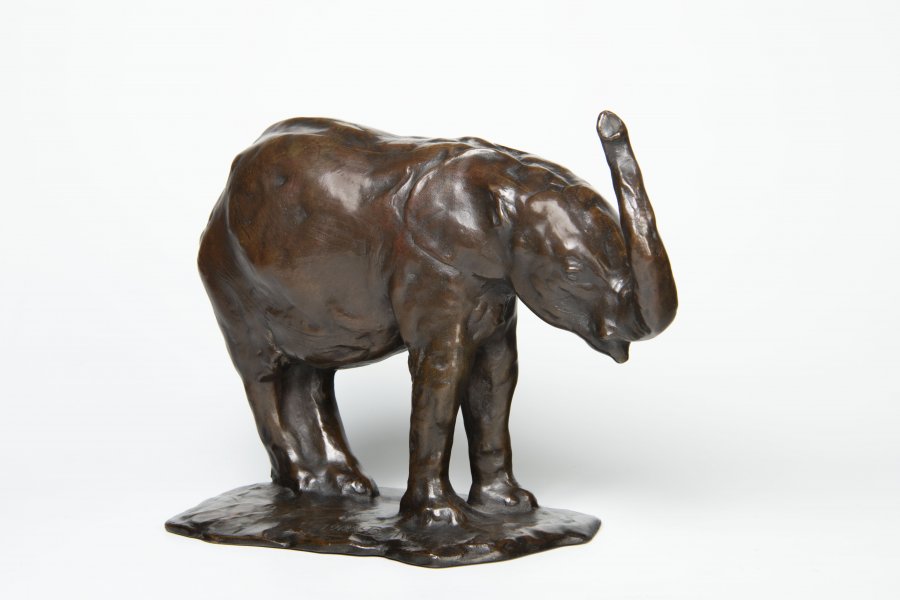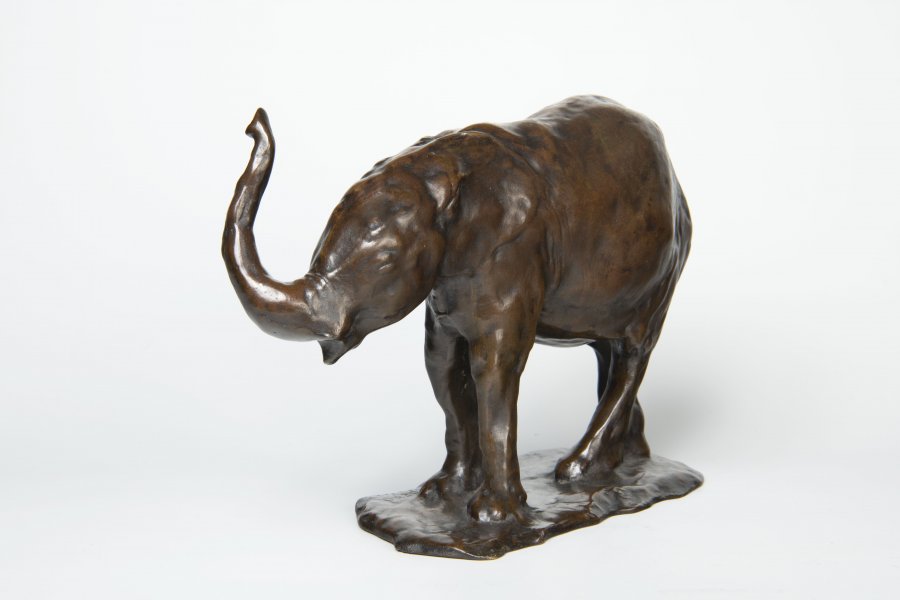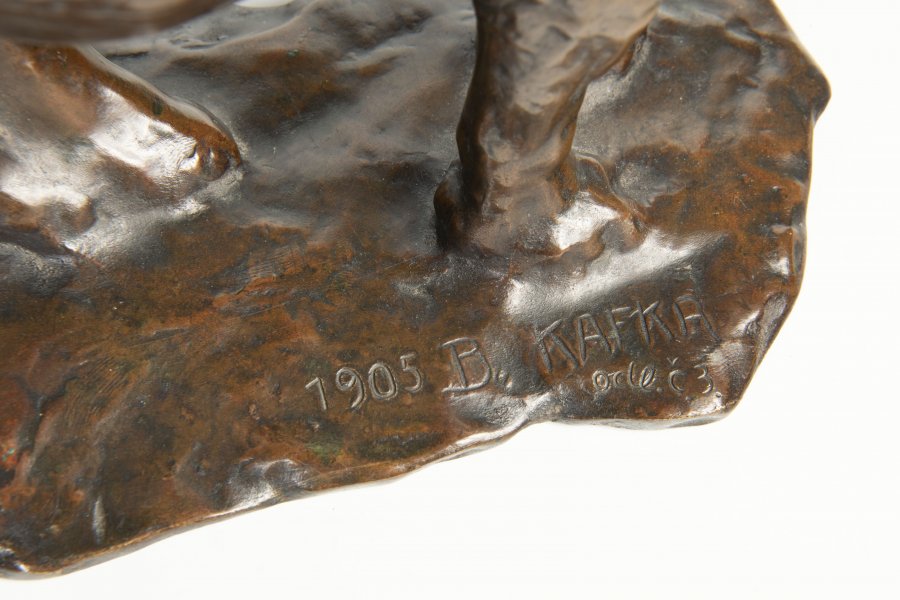Lot 65
BABY ELEPHANT
1905
18 x 25,5 cm (h x b)
| 2 500 EUR
| 7 500 EUR
As early as March 1905, Kafka applied to the Paris prefecture for permission to sketch animals in the Jardin des Plantes. He would always go there in the spring to draw in the mornings, and the result was the intimate sculptures of a doe and her fawns, a camel, and later an elephant, which became Kafka's most successful and sought-after sculptures. They are reminiscent of the work of Rembrandt Bugatti, whom Kafka met in Paris. The two artists worked on the animal sculptures almost simultaneously. While Kafka concluded the series in 1905, Bugatti continued his animal sculptures. Kafka's animals represent a very modern sculptural impressionism, which he continued to develop in his later works.
Bohumil Kafka's sculptural work was largely created in the spirit of Art Nouveau and Symbolist tendencies. Kafka studied at the Sculpture and Stone School in Hořice v Podkrkonoší and at the School of Applied Arts in Prague. In 1904-1908 he lived and worked in Paris. He collaborated with his teacher Stanislav Sucharda on the monument to František Palacký. After Sucharda's death in 1916, he was appointed professor of decorative sculpture at the School of Decorative Arts. In 1925 he became professor of sculpture at the Academy of Fine Arts. He also created a number of decorative elements for facades, busts, statues and monuments. The offered work comes from the author's estate from the famous Kafka's villa in Prague 6, Ořechovka. It is the author's 3rd cast made during his time in Paris by the bronze maker Hébrard using the lost wax technique.
Republished: Kafka, Bohumil and Wittlich, Petr. Bohumil Kafka: (1878-1942) : the story of a sculptor. Prague: Karolinum, 2014, p. 78.
Andere Auktionsgegenstände
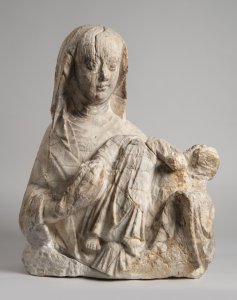
Lot 1 LATE GOTHIC MADONNA WITH CHILD
Rufpreis28 000 CZK | 1 167 EUR
Erzielter Preis
120 000 CZK | 5 000 EUR
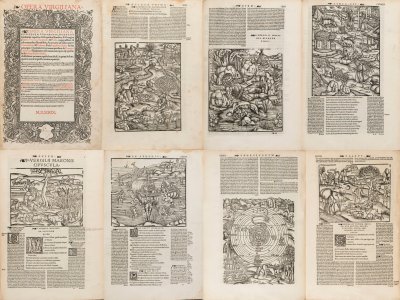
Lot 2 OPERA VIRGILIANA
Rufpreis48 000 CZK | 2 000 EUR
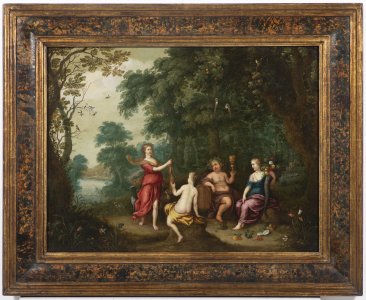
Lot 3 DIANA, BACCHUS AND FLORA
Rufpreis380 000 CZK | 15 833 EUR
Erzielter Preis
380 000 CZK | 15 833 EUR
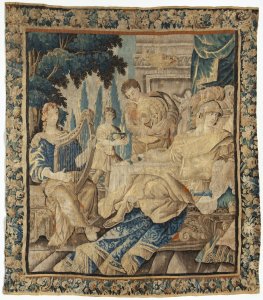
Lot 4 SCENE FROM THE BANQUET OF DIDO AND AENEAS
Rufpreis65 000 CZK | 2 708 EUR
Erzielter Preis
85 000 CZK | 3 542 EUR
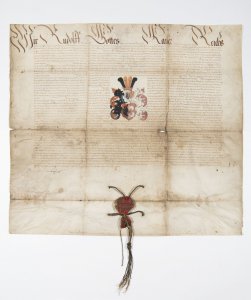
Lot 5 NOBILITATION GRANTED BY RUDOLF II.
Rufpreis80 000 CZK | 3 333 EUR
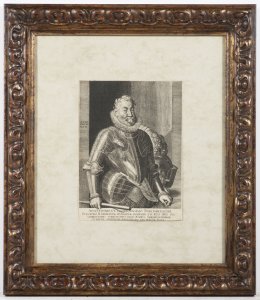
Lot 6 PORTRAIT OF RUDOLF II.
Rufpreis25 000 CZK | 1 042 EUR
Erzielter Preis
40 000 CZK | 1 667 EUR
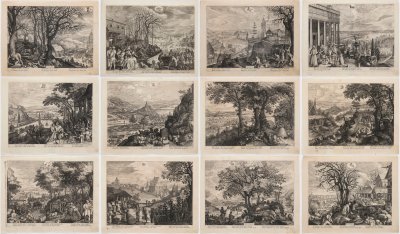
Lot 7 TWELVE MONTHS CYCLE
Rufpreis55 000 CZK | 2 292 EUR
Erzielter Preis
95 000 CZK | 3 958 EUR

Lot 8 A LARGE VIEW OF PRAGUE
Rufpreis45 000 CZK | 1 875 EUR
Erzielter Preis
65 000 CZK | 2 708 EUR
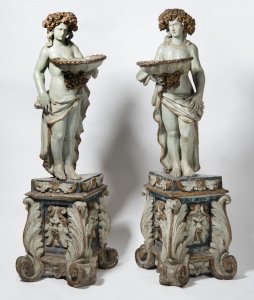
Lot 9 PAIR OF BAROQUE CARRIERS
Rufpreis180 000 CZK | 7 500 EUR
Erzielter Preis
200 000 CZK | 8 333 EUR
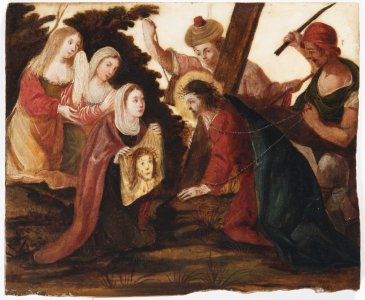
Lot 10 CHRIST AND VERONICA
Rufpreis28 000 CZK | 1 167 EUR
Erzielter Preis
28 000 CZK | 1 167 EUR
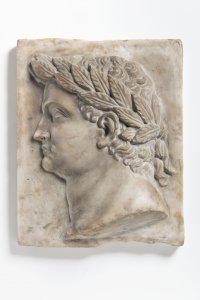
Lot 11 RENAISSANCE PORTRAIT OF THE ROMAN EMPEROR
Rufpreis16 000 CZK | 667 EUR
Erzielter Preis
21 000 CZK | 875 EUR
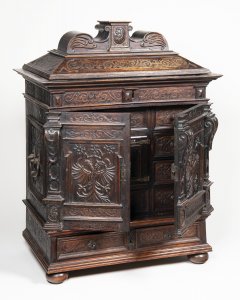
Lot 12 LATE MANNERIST CABINET
Rufpreis35 000 CZK | 1 458 EUR
Erzielter Preis
70 000 CZK | 2 917 EUR

